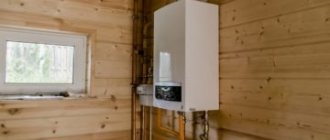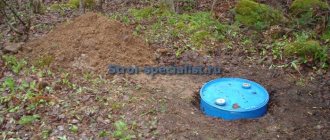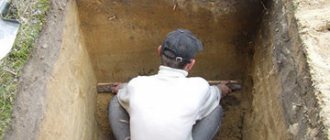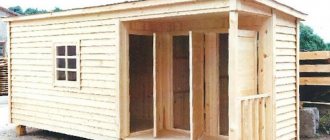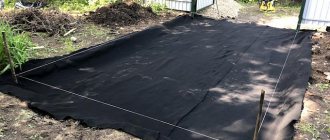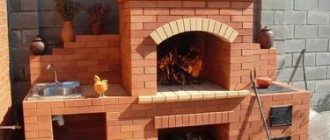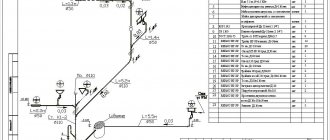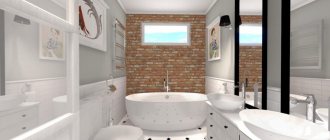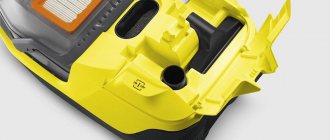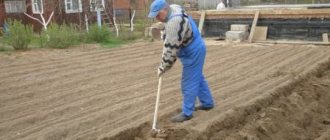Any dacha owner wants his vacation on the property to be as comfortable as possible. For these purposes, in the absence of a central sewage system, a toilet is made. But constantly cleaning it and pumping out accumulated waste is not a particularly pleasant task. So, in this article we will look at the best ways to make a garden toilet without odor and pumping.
A comfortable toilet will make your stay at the dacha much easier
Requirements for a toilet pit in the country
Before arranging a toilet, it is worth considering how often it will be used and by how many people. If the dacha is visited only in the summer, and the toilet will be used by 1-2 people, then a simple and small reservoir for draining feces will do. If the visit is intensive and regular, then you need to take care of a larger volume, tightness and the ability to clean the tank. If in the spring the groundwater at the dacha rises above 2.5 m, then it is impossible to equip a cesspool.
Important! In a country house with an extremely high level of wastewater, it is better to install a dry closet due to the likelihood of faeces being washed out.
If there is a well or a well at the dacha, then the toilet must be located definitely below the water. If the street cesspool overflows, the waste will not clog the drinking and technical source.
The bottom of the cesspool can be completely sealed or based on the filter principle using only a drainage pad made of sand and crushed stone. In the case of an insulated septic tank, faeces will need to be removed periodically using a suitable method. With a filter bottom, it is believed that the liquid part of the waste, undergoing some purification by drainage, will be absorbed into the soil. With this method, there is a high probability that the bottom of the cesspool will silt, which will prevent liquid from seeping into the soil.
Alternative option
If your groundwater is very high or you will use the structure occasionally, then you can make a country toilet without a cesspool, which is otherwise called a powder closet.
The simplest version of a powder closet
Its main feature is that a container is installed under the wooden toilet seat, most often a bucket, which serves to collect waste. The system is operated using filler, most often peat or fine sawdust is used for this.
The design is used as follows: filler is poured onto the bottom of the container, and filler is added after each use. Once the container is full, it should be taken out to the compost heap. As you can see, everything is very simple.
In order to minimize the unpleasant odor when using a powder closet, ventilation should be made in the form of a pipe coming from the compartment with the container upwards.
Ventilation is a very effective solution to combat unpleasant odors
Choosing a place for a pit for a toilet in the country
To make a cesspool toilet in the country, you need to choose the optimal location on your personal plot.
Basic sanitary standards that regulate the location of the cesspool of an outdoor toilet in a country house:
- The pit should be at least 12 m from a residential building.
- The toilet pit should be 4 m away from trees and 2 m away from bushes.
- The distance from the pit to the fence is at least 1 m.
- The pit is located more than 30 m from any source of water. The construction of a pit without a bottom near water bodies is prohibited.
- The distance to outbuildings on the site must be at least 4 m.
Such strict requirements for the placement of a cesspool in a dacha are due to the fact that waste comes into direct contact with the soil, which can lead to the spread of serious diseases.
In addition to compliance with the basic provisions of SNiP, they take into account the requirements for their own and neighboring plots.
When choosing a place to dig a hole for a toilet in the country with your own hands, take into account the direction of the wind. You need to observe in which direction the strong wind blows most often, position the tank so that the smell from the pit does not go to residential buildings and the veranda. It is imperative to provide access for the cesspool truck to the toilet if the pit is supposed to be such that special equipment is required to clean it. Due to its dimensions, the machine itself should go to the toilet, and the pumping hose could unfold freely.
Conclusion
Making a toilet with a cesspool is not difficult; you need to choose the optimal design and follow the recommendations outlined above. It is equally important to properly maintain the system, and in order not to spend money on vacuum cleaners, use bacteria, they will relieve you of the unpleasant odor, and the water can be used for irrigation. The video in this article will help you understand some of the nuances better, and if you don’t understand something, ask in the comments.
Did you like the article? Subscribe to our Yandex.Zen channel
August 3, 2021
Cesspools, Sewerage
If you want to express gratitude, add a clarification or objection, or ask the author something, add a comment or say thank you!
Width and depth of pit for a toilet in the country
As a rule, a cesspool outdoor toilet on a summer cottage is placed in a shallow hole. Its optimal depth is 1.5-2 m. The width of the cesspool for digging should be within 1.5 m by 1.5 m. For the construction of an ordinary country toilet, such a tank is quite sufficient; as the width of the side walls increases, it becomes more difficult to cover the pit.
When the pit is designed not only for toilet waste, but also for waste from a residential building, then to calculate the width and depth, the number of people living in the country is taken into account. On average, 1 person consumes 180 liters of water per day. Having made simple calculations, it becomes clear that, for example, 3 people will fill a waste pit with 12 m3 per month of constant use. The pit is made with a reserve, so its volume in this case should be at least 18 m3.
Comment! A pit without a bottom at the dacha is made taking into account the soil. Sandy and loose soil absorbs up to 40% of water, and clay soil does not absorb water well, so the pit is made with a reserve.
In any case, a hole for a latrine in a dacha should not be dug deeper than 3 m. If this depth is not enough, then it is better to install a septic tank or pump out waste more often.
Examples of finished projects
One of the simplest solutions for country toilets, which are used everywhere, is the construction of a “birdhouse”. This is the name given to a standard rectangular restroom. Most often it has a pitched roof, which is made of slate. Below you can see a drawing indicating the dimensions of just such a restroom. Among the disadvantages, it is worth noting that the restroom is unstable to loads, as well as the need for additional upholstery material that will eliminate drafts.
If you want something more intricate, then you can build a triangular toilet. It is called a hut. This is exactly what it resembles with its shape. The triangle is one of the most stable shapes, so such a toilet can withstand both wind and snow loads. Unlike the previous option, snow cover will not be able to accumulate on such a latrine. Below is a drawing showing all the dimensions of the restroom. You should not save when choosing the width of the toilet. If you make it too small, then it will be almost impossible to stand up to your full height in the restroom.
A more complex toilet option for making in the country is a diamond-shaped toilet. It is also called a hut. Such a restroom will require significant consumption of building material. But with such a toilet you can be sure of stability even in strong winds. Another solution would be to build a restroom in the shape of a small house. It usually has a gable roof and is constructed from any type of materials.
How to make a pit for a toilet in the country with your own hands
After choosing a suitable location for the toilet and calculating the volume of the hole, you can begin digging a pit.
To dig a hole for a toilet in a country house of the required size and shape, you need to decide how the walls will be reinforced. A cesspool without arrangement is unsuitable for use due to the fact that the earthen walls will crumble over time. This will lead to a significant reduction in the volume of the cesspool and is fraught with deformation of the entire toilet. Also, direct contact of feces with the ground will have a detrimental effect on the quality of the soil on the site. Strengthening the walls of a cesspool in a country house can be done independently using available materials, without resorting to the help of special equipment and without expensive septic tanks.
System design development
To organize a warm toilet at the dacha, the optimal solution would be to make two containers.
In the first of them, the primary decomposition of wastewater will be carried out, and in the second, the final decomposition. For a homemade cleaning system, you can use containers made of durable plastic. They are sold at paint factories and returnable packaging warehouses. A hole is made in the first container, which will serve as the entrance to the drain pipe. A connection is made between the containers, then a hole for the ventilation pipe, as well as for the drainage outlet. To install a warm country toilet, ordinary sewer pipes with a diameter of 100mm to 150mm are used. It is most convenient to work with metal-plastic pipes. Their sections are combined with collets and fittings. A tee with a connector is used for input. If you plan to use your warm toilet in winter, then lay the pipes underground one and a half meters (or deeper). It is better to insulate the pipes first.
How to strengthen a toilet pit in a country house
You can secure the dug pit for the toilet with any material that is not subject to decomposition in sewage. Depending on the chosen resource, strengthening can be absolutely free or quite affordable for the owner of a summer cottage.
Tire pit
Old unnecessary tires are one of the cheap and functional options for arranging a cesspool toilet when 1-2 people live at the dacha during the warm period. This design is easy to install and can be done in one day. Any tires are suitable for arranging a pit; the wider their diameter, the larger the volume of the cesspool.
Installation of a cesspool for a latrine made of tires is simple. You need to find about 8-10 medium-sized tires. The easiest way is to search the service station for used tires that are no longer useful for cars. A hole is dug along the outline of one tire, adding 20 cm to the diameter.
Then a drainage layer is made at the bottom of the pit - 5 cm of sand and 20 cm of crushed stone are poured. The side rims of tires are cut off so that they do not steal volume and do not interfere with cleaning the pit. A hole is cut out on the rim of one wheel for the exhaust pipe. Place the tires on top of each other on the drainage pad of the pit, completing the pyramid with a wheel with a hole for the pipe. Insert the pipe into the hole.
The gap between the pit soil and the tires is filled with small stones and sand or crushed stone.
Cover the pit with a wheeled structure with a metal lid at least 4-5 mm thick or a strong wooden shield with a hole for the hatch.
Important! Such a cesspool for an outdoor toilet in a country house made from tires will last no more than 15-20 years.
Brick pit
The side walls of the brick cesspool can be any within one and a half meters. The optimal depth of a brick tank is 2 m. These parameters are selected depending on the number of people who will use the toilet in the country. The more people there are, the wider and deeper the hole is made.
The operating principle is as follows:
- It is necessary to dig a rectangular hole for a toilet in the country according to the selected dimensions. The bottom of the pit is compacted, 10-15 cm of sand and gravel are poured and a concrete screed is formed with the addition of crushed stone. The pit is left until it hardens completely.
- Lay out the brick walls in a dressing, finishing the laying 10-15 cm above the ground surface.
- Brick walls are plastered and treated with bitumen mastic for additional sealing of the pit. Fill the gap between the walls of the pit and the brickwork with soil and compact it tightly. The entire structure is covered with a metal plate or thick boards, leaving a hole for the toilet.
Important! To lay out a cesspool tank in a country house, red brick is chosen because of its resistance to moisture.
Concrete rings
A cesspool for a toilet in a country house is equipped with concrete rings using lifting equipment, but the process itself is quick, like assembling a construction set.
- Dig a hole the size of a concrete ring with a margin of 15-20 cm. Drain the bottom with sand and crushed stone to a depth of 20-25 cm. Fill the bottom of the hole with concrete or place a ring with a cast bottom first. When filling the bottom with cement mortar, leave the cesspool to dry completely.
- Using a crane, the rings are lowered into the pit, pre-lubricating the joints with cement mortar if there are no locking locks. The rings are tightened together with a bandage of bolts and steel plates to prevent them from shifting.
- Treat the concrete surface with bitumen for additional insulation. Fill the gaps between the rings and the walls of the cesspool with soil. Cover the structure with a concrete slab or thick metal sheets with a hole for the hatch.
There is one clever way to install concrete rings without using a crane. The first ring is installed by rolling on the place where the toilet will be in the country. Using a bucket and shovel, remove the soil inside the ring. The heavy concrete ring sags under its own weight as the earth is excavated. When the top of the ring sinks to the same level as the surface, roll on the second ring. This continues until all the rings are installed in the cesspool.
Attention! With this method, you cannot use a ring with a cast bottom first. This will make the principle of installing a concrete pit tank without the use of a crane impossible.
Plastic tank
One of the easiest, but not the most budget-friendly options for constructing a cesspool in a country house for a toilet is to bury a thick plastic container to accumulate feces. For this purpose, Eurocubes or large plastic barrels are used.
This creates a sealed latrine tank. After purchasing a plastic tank, they begin to install the structure.
- Dig a hole in a summer cottage slightly larger than the container. A 15-20 cm gap between the earthen walls and the tank is sufficient. The pit is drained with pebbles and sand to a depth of 10-15 cm. A reinforcing mesh with metal loops is formed. Fill the structure with cement mortar so that the rings protrude in height from the concrete. Let it dry.
- Having tied a plastic container with cables, they lower it into the cesspool. Cables are attached to the protruding loops so that the fixation does not allow groundwater to push the lightweight plastic tank upward in the future. Fill the fixed tank with water to prevent it from being crushed when backfilling.
- Fill the gap between the walls of the earth and the PVC tank. To do this, it is better to take a dry mixture consisting of 5 parts of coarse sand and one component of cement. Compact thoroughly. Pump water out of the reservoir. Cover with the lid provided with the container. A concrete platform is poured over a plastic cesspool.
Comment! The more people use the toilet in the country, the larger the volume of the plastic cesspool should be.
Monolithic pit
The construction of a reinforced monolithic cesspool for an outdoor toilet is an expensive and labor-intensive construction. But there are cases when you can’t do without it, for example, if you plan to combine the drainage of waste water from a toilet, bathhouse and home.
In this case, dig a hole of the required size. A drainage cushion of sand and gravel 20-25 cm is poured. A steel reinforced mesh is placed on the drainage. From its outer edges, reinforcement is placed along the walls of the cesspool. Fill the bottom with cement mortar. Let it dry. Formwork is erected around the perimeter of the pit. The roofing felt sheets are fixed, which will serve as a flat formwork wall. Concrete is poured in layers, periodically piercing with a stick to compact the mixture. Pouring the mortar into the walls of the cesspool must be done within one day. When the structure is completely filled, the pit is left until it dries thoroughly. The formwork is removed and checked for possible voids and defects in the concrete walls. If necessary, level until complete sealing is achieved.
Cover the cement cesspool with concrete slabs or a metal shield with a hole.
Choosing a wastewater treatment system
The most common method for summer residents is biological treatment.
This method is based on the life process of special bacteria placed in a well or septic tank. Usually used:
anaerobic, aerobic purification system.
They involve the use of a septic tank - a special container in which the above-mentioned microorganisms decompose the waste of our life. After this, the wastewater enters the soil through the drainage (if the soil does not absorb moisture well enough, then the wastewater goes to the place of filtration, i.e., to the nearest ditch).
It must be taken into account that the septic tank must be at least 5 meters away from the house, and 20 meters from the well. The volume of the septic tank should be three to four times the daily water consumption.
A biological treatment system can be organized in a simpler way - by installing a well made of reinforced concrete rings or one large container:
The bottom of the wells must be sealed with roofing material or waterproofing (several layers), or cement. The joints of reinforced concrete rings must be made airtight. To do this, use cement mortar or liquid glass. The well is equipped with a tightly fitted lid with an inspection hatch. The contents are discharged at the level of the lower ring or using a sewer truck.
How to clean a toilet pit in a country house
A toilet cesspool made from any materials needs cleaning over time. There are different methods of cleansing:
- A pit at a summer cottage is cleaned on your own using scoops, pumps and other manual means. This option is absolutely free, but causes a lot of inconvenience due to the spread of a pungent odor and the disposal of feces.
- Calling a sewer truck. This is the most environmentally friendly and simplest method of cleaning a toilet pit in a country house, but it is only possible if there is good access from a machine with a hose.
- The use of biological products that decompose waste directly in the cesspool. The use of such means for processing feces at the dacha will allow the use of decomposition products as fertilizers on the site.
- If there is a need to clean the cesspool of a toilet in the country in the winter, then biological products will not cope. At sub-zero temperatures, bacteria do not multiply and the drug will not work. Then chemicals are used, after which the remaining waste is disposed of.
Modules are ideal for installation
— at construction and production sites,
- at public events in the fresh air,
- in crowded places in the city ,
- at gas stations ,
- at fairs ,
- in parks and squares,
- at rallies ,
- in parking lots ,
— at mobile business .
The modular toilet can be used at any time of the year. The insulated design of increased comfort will give comfort and ease of use even at very low temperatures.
Very often, public modular toilets with heating are purchased for construction and industrial sites in regions with harsh climatic conditions in the Far North. The module is a reliable tool that solves major sanitary and hygienic issues and creates optimal working conditions for workers.
Video description
About the advantages of the peat model in the following video:
Peat as an important component of the system Source erdus.club
Average prices for peat toilets are as follows:
- Compact models . The volume of the storage tank is 40-60 l, there is a mechanism for feeding the peat mixture, as well as a ventilation hose and drainage pipes. The price is 4.5-7.6 thousand rubles.
- Large models . Height 41-46 cm, volume of the receiving container 110-120 l, peat container - 20 l. The filling period is approximately 200 visits. The cost of Finnish models is 11.2-14.5 thousand rubles, Swedish and German - from 20-25 thousand rubles.
Features of choosing insulation and materials for work
Due to limited space, as a rule, the ideal option for this is the usual mineral slabs. However, in addition to this, you will also need the following materials:
- Rectangular metal slats
. - Film
(it will be needed for waterproofing). - Sheets of drywall
(preferably moisture-resistant). - Fasteners
(screws, profiles). - Putty
(necessary for sealing joints).
To select the required amount of materials, it is necessary to proceed from the actual parameters of the toilet (width and height).
TOP 10 best dry closets
If we talk about domestic manufacturers, the most affordable models of peat toilets are produced in St. Petersburg. produces peat dry toilets Compact. They are available in different modifications, with different options and prices.
| Name | Storage tank capacity | Add. equipment | Dimensions | Seat height | Price |
| Compact M | 60 l | handles on the container | 720*420*580 mm | 380 mm | 56$ |
| Compact Elite | 40 l | handles on the container | 690*380*600 mm | 400 mm | 83$ |
| Compact Elite with drainage | 40 l | Rear outlet for liquid waste disposal | 690*380*600 mm | 400 mm | 87$ |
| Compact Eco | 60 l | you can install a fan in the pipe, outlet for liquid waste | 760*510*670 mm | 450 mm | 120$ |
| Compact Eco with fan | 60 l | built-in fan, liquid waste outlet | 760*510*670 mm | 450 mm | 130$ |
Another Russian manufacturer of peat dry toilets is the PitEco campaign. Their range includes 7 models of different sizes, made of different materials (polypropylene, acrylic, low-density polyethylene). Each model can be additionally equipped with a fan, which is placed in the exhaust pipe.
| Name | Housing material | Automatic doors | Liquid waste disposal with filter | Volume of the tank | Price |
| PitEco 905 | polypropylene | No | There is | 120 l (wheels) | 160$ |
| PitEco 101 | low-pressure polyethylene | No | No | 70 l | 135$ |
| PitEco 200 | acrylic | No | There is | 70 l | 195$ |
| PitEco 201 | low-pressure polyethylene | No | There is | 70 l | 138$ |
| PitEco 400 | acrylic | There is | There is | 70 l | 250$ |
| PitEco 505 | polypropylene | No | There is | 44 l | 83$ |
| PitEco 506 (improved peat spreader) | polypropylene | No | There is | 44 l | 85$ |
There are also imported peat dry closets on the market. The most popular products are from a Finnish company called Biolan. The products are distinguished by high quality, thoughtful design and functionality.
| Name | Waste tank volume | Peat tank volume | Dimensions (L*W*H) | Seat height | Price |
| Biolan Komplet | 140 l | 33 l | 850*600*780 mm | 530 mm | 340$ |
| Biolan with waste separator into liquid and dry fractions | 28 l | 30 l | 780*600*850 mm | 530 mm | 415$ |
| BIOLAN ECO | 200 l (wheels) | base area 51 cm2, seat area 64 cm2, height 100 mm | 575$ | ||
| Biolan populet 200 | 200 l (wheels) | height 820 mm | 550 mm | 985$ | |
| Biolan populet 300 | 300 l (wheels) | height 811 mm | 510 mm | 895$ | |
| Biolan Naturum | 30 l | 7 l | 840*740*810 mm | 470-490 mm | 1045$ |
Another well-known manufacturer of peat toilets is the Finnish company Kekkilä Group, which produces products under the Ekomatic brand. There are inexpensive, budget models that are positioned as dry closets for summer cottages, and there are very expensive options that have an interesting design.
| Name | Housing material | Emptying method | Dimensions | Seat height | Volume | Production | Price |
| Ecomatik Peat | standard | 960*600*780 mm | 500 mm | 110 l | Russia | 265$ | |
| Ekomatic | standard | 960*600*780 mm | 500 mm | 110 l | Finland | 390$ | |
| Ecomatic Green | standard | 960*600*780 mm | 500 mm | 110 l | Finland | 190$ | |
| Ecomatic-50 Kekkila | polypropylene with fiberglass | through the lid | 500*470*510 mm | 510 mm | Finland | 160$ | |
| Ecomatic Trio-100 | polyethylene | through the lid | 800*460*800 mm | 460 mm | 100 l (3 sections) | Finland | 410$ |
| Duomatic | standard | 875*780*900 mm | 480 mm | 2 * 80 l | Finland | 715$ | |
| Ecomatic Green | through removable top | diameter 1150 mm, height 950 mm | 470 mm | 700 l | Finland | 1200 $ |
Varieties
Traditional options
Different types of toilets for dachas require different approaches to arrangement, therefore, before starting work on installing a sewer system, it is worth studying all the available options and analyzing their pros and cons.
So, what can you choose for a suburban area:
The simplest design is a wooden or plastic-lined booth installed directly above. This option is the least expensive in terms of equipment, but the comfort it provides is very conditional: it’s cold, the wind blows through the cracks, and there’s a bad smell inside.
The advantages of dry toilets include ease of use and the ability to move from place to place. The disadvantages are the need to regularly replace filling containers (the cost of the service company’s work can be very high). And in winter it’s still quite uncomfortable in such a booth.
Innovative solutions
If you want to equip a winter toilet (i.e.
one that can be used throughout the year without the risk of catching a cold), then in addition to traditional solutions, you can also pay attention to modern models
Some of them are presented in the following table:
| Device type | Operating principle |
| Compost with partial recycling of waste | Peat or a mixture of peat and sawdust is used as a reagent. When interacting with wastewater, the material is effectively composted. In modern models, peat is filled using an automatic dispenser. |
| Compost with full recycling of waste | It differs from the version with partial recycling in the large volume of the waste bin. Long-term storage of wastewater allows for more efficient composting of feces, turning it into a fairly productive organic fertilizer. |
| Separation | During the operation, the liquid and solid fractions are separated. This allows faeces to be recovered for composting and better treatment of wastewater with high moisture content through filtration. |
| Thermal | Waste disposal is carried out by burning it to ash. Combustion is carried out in a special thermally insulating container using an incandescent spiral or an open flame. The main disadvantage of this technology is the high power consumption (up to 5 kW). |
| Freezing | Perhaps the most unusual toilet described in this section. It consists of a container and a container for freezing waste. Deep freezing allows you to avoid the appearance of an unpleasant odor, in addition, almost all microorganisms are destroyed during the cryotreatment process. As a result, fecal matter becomes completely suitable for composting. The main disadvantage is energy dependence. |
As you can see, such devices can significantly optimize the process of removing sewage. At the same time, for their operation it is necessary to have a source of electricity, therefore, when installing them, renting a diesel generator for a summer residence will move from the “desirable” category to the “necessary” category.
High-quality thermal insulation using polyurethane foam
Now, this material has become very widespread due to its versatility and excellent characteristics that distinguish it from other thermal insulation materials. In general, polyurethane foam can be used as insulation for both exterior and interior decoration.
The main advantages of polyurethane foam as insulation for outdoor toilets:
In addition, insulation of a toilet located on the street with polyurethane foam is universal. This is due to the possibility of using polyurethane foam boards. They are frozen forms of polyurethane foam that are used for thermal insulation of a room. Thus, PPU slabs are successfully used, which increases their heat capacity in general.
The main advantages of polyurethane foam boards can be considered the following:
- High density of contact with walls. Regardless of what material the outdoor toilet is made of, the slabs do not form cracks and gaps through which heat loss occurs.
- High resistance to physical stress and deformation. Due to their structure, polyurethane foam boards do not lose their shape throughout their entire service life.
- If installed correctly, the material will not lose its thermal insulation characteristics for 70 years.
- Complete environmental safety.
- If moisture gets in, the insulation will absorb no more than 2% of its mass. The rest of the liquid will not touch the walls of the toilet.
Video description
About preparing the dry closet for use in the following video:
Liquid dry toilets Source septik.guru
- Biological (bacterial) . Living bacteria process waste, so pumping is not necessary, and the contents of the lower reservoir can be safely poured into compost. Such safe compounds are green in color.
- Liquids for the upper chamber (deodorizing) are colored pink.
Liquid toilets are cheaper than other devices - their price starts from 3.5-3.9 thousand rubles; Finnish, German and Chinese-made models are popular. The cost of most devices falls within the following range:
- Compact models . Height 33-42 cm, capacity of the drain tank and waste tank - 12-21 l. There is a pressure release button; the filling indicator is not present in all designs. The cost of such models is 3.9-6.8 thousand rubles.
- Large models . Height 41-46 cm, drain tank capacity 15-20 l, storage tank 24-30 l. The number of regular users is no more than 7 people. Cost 8.6-12.3 thousand rubles.
Work process
Sprayed polyurethane foam leaves no cracks or gaps, resulting in the best thermal insulation and wind protection.
The first step is to carry out the sheathing using wooden slats. They should be driven in at a distance of 50 cm from each other. Then insulation is laid on them, which is attached with self-tapping screws directly to the sheathing. After the slabs are laid on the walls and ceiling, you can move on to the film. It is used for waterproofing a room, i.e. to avoid moisture getting on the surface of the insulation. Usually the film is attached to the plates using tape.
The final stage remains - landscaping. To hide the slabs, you can use sheets of drywall. They are attached using metal profiles using self-tapping screws. The joints of the connections are covered with putty. After this, decorative tiles or wallpaper can be laid on the walls and ceiling. This completes the thermal insulation of the outdoor toilet. You can read about the insulation of barns and outbuildings on the page.
As you can see from everything described above, this process is very, very labor-intensive, requiring considerable expenditure, both time and finances... But there is an alternative!


